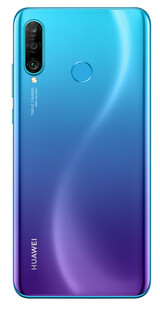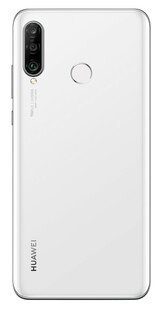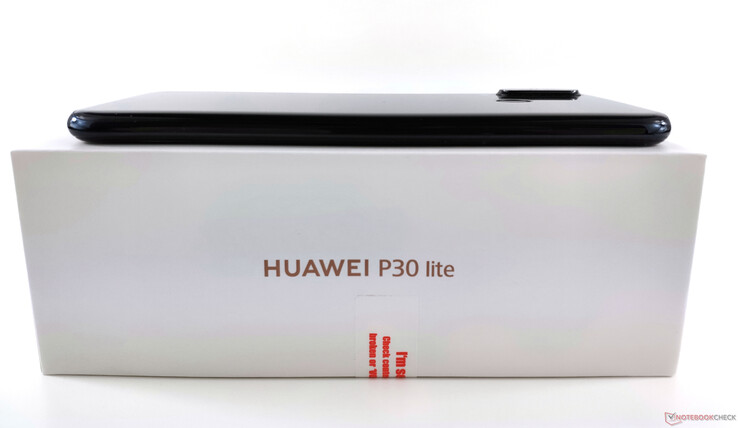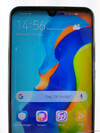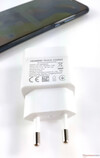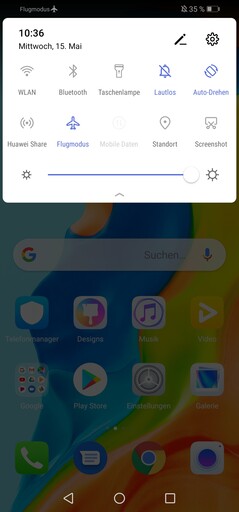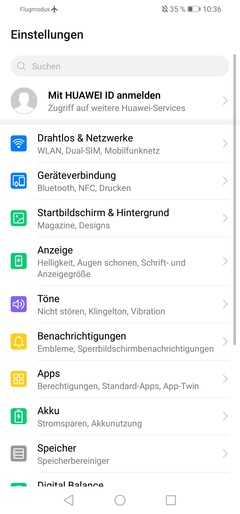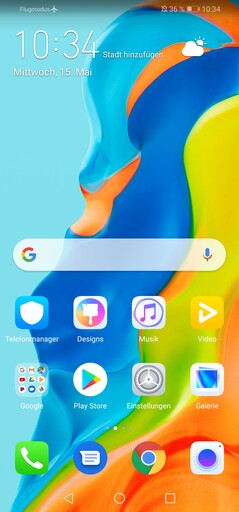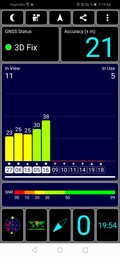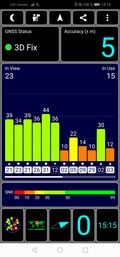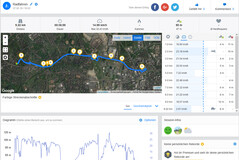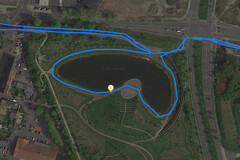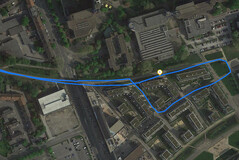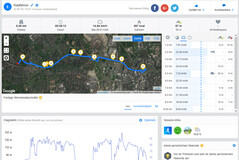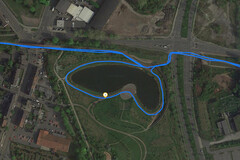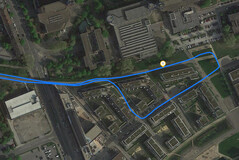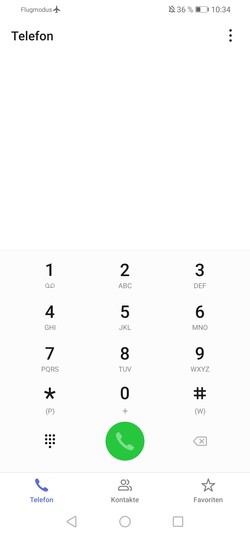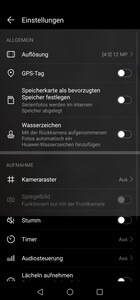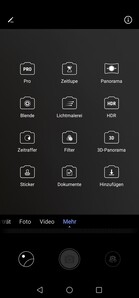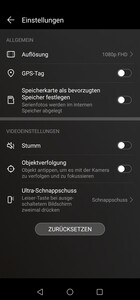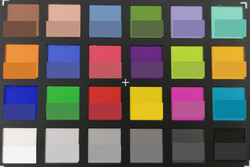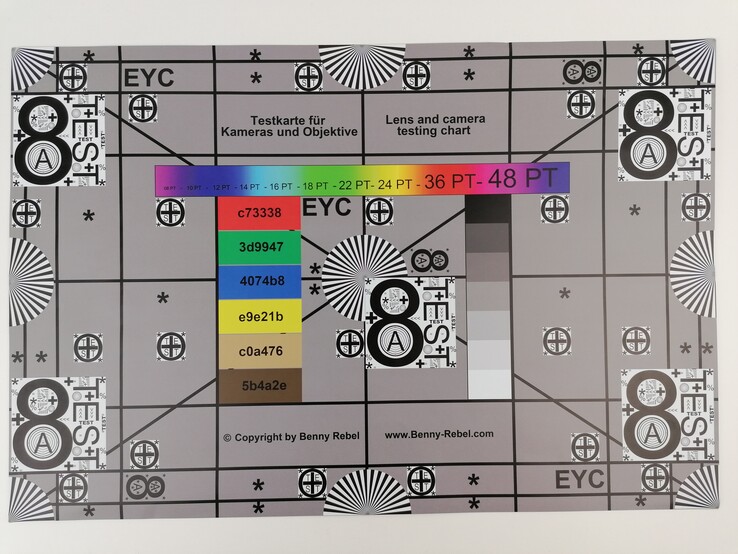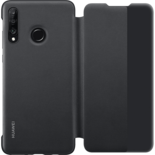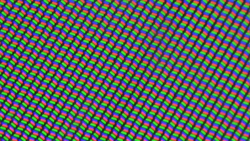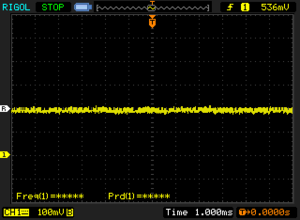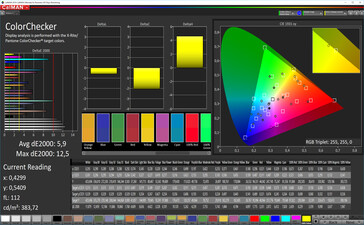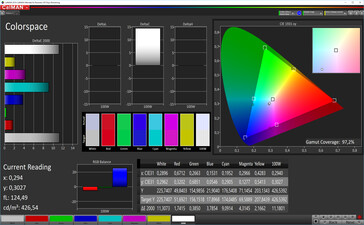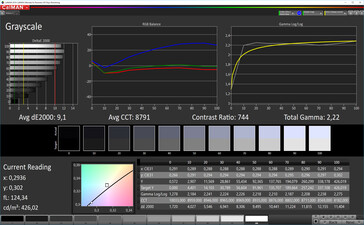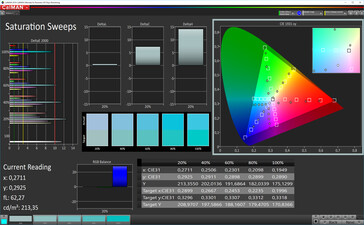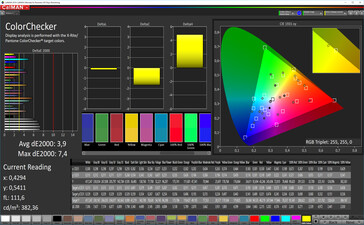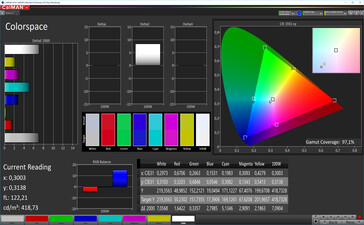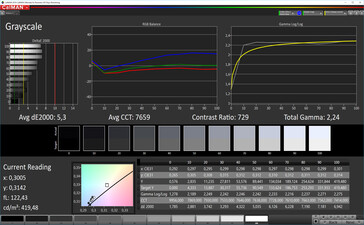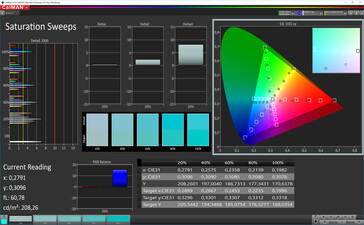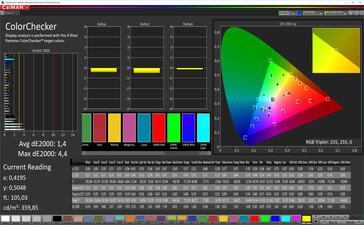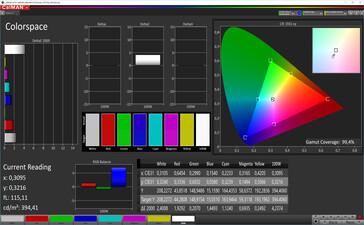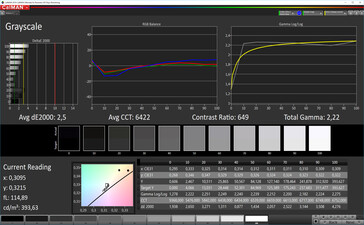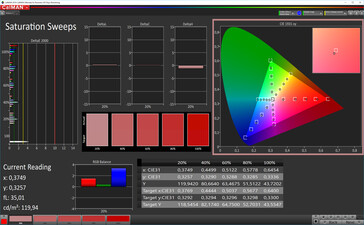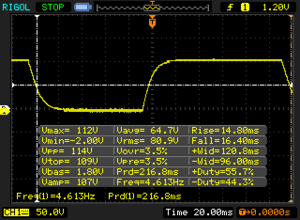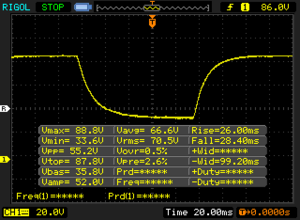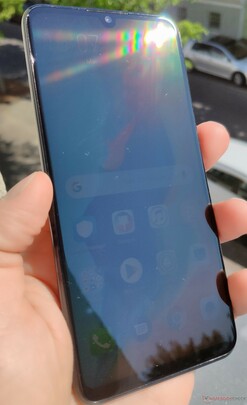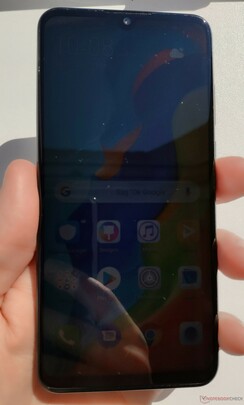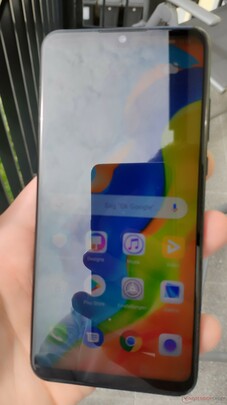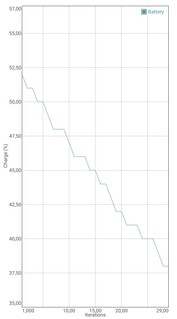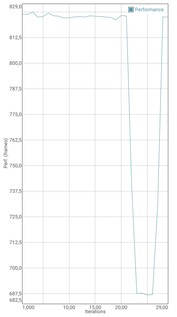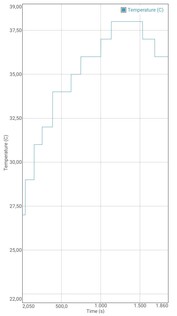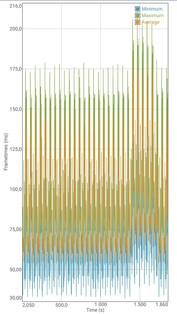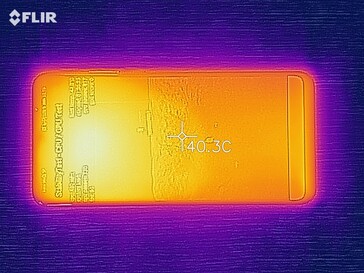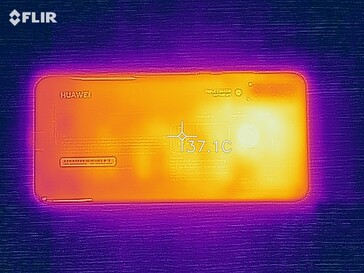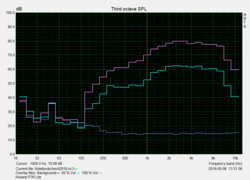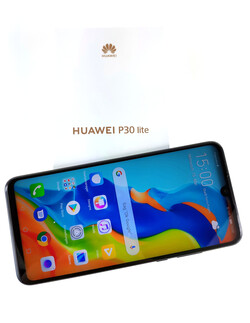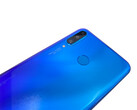Huawei P30 Lite Smartphone Review
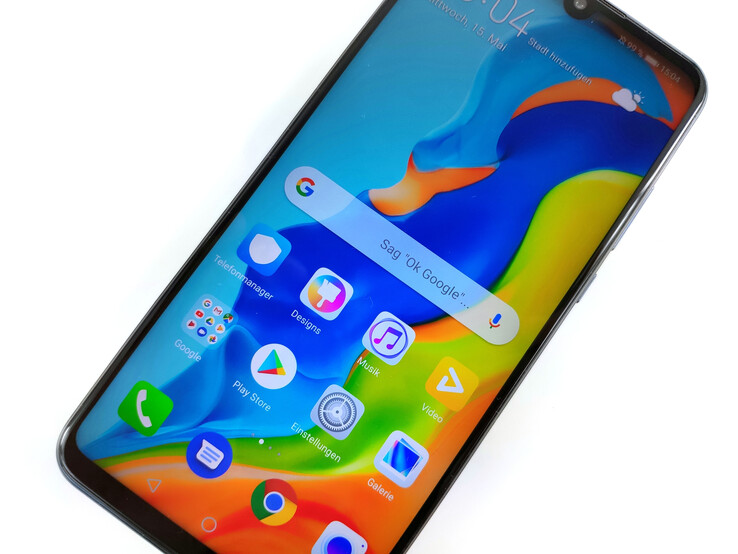
In addition to its P30 and P30 Pro high-end smartphones Huawei also introduced the mid-range P30 Lite in order to round off its P30 line-up for this year. With 6 percent the P20 Lite was the best-selling Huawei smartphone in Germany in the third quarter of 2018 (Source: statista).
As with its two other siblings the Lite model focuses primarily on photography, and the Chinese manufacturer from Shenzhen equips its Lite model with a so-called AI triple-camera comprised of a 48 MP camera, a wide-angle camera, and a telephoto lens, all three of which are supported by various artificial intelligence algorithms and features. The front-facing camera hidden inside a waterdrop notch above the 6.15-inch display, is equipped with a single 24 MP sensor.
At the time of writing the P30 sold for around $300 in the US. It comes with 128 GB of internal storage, NFC, an IPS panel with FHD+ resolution, and a fingerprint reader at the back. It is powered by Huawei’s own HiSilicon Kirin 710 SoC and 4 GB of RAM.
Potential competitors are other mid-range smartphones, such as the Xiaomi Mi 9 SE, Motorola Moto G7 Plus, Nokia 8.1, Samsung Galaxy A50, or the Sony Xperia 10, as well as some similarly priced yet much better equipped high-end smartphones, such as the Xiaomi Mi 8 and Pocophone F1.
Case
The Lite’s case resembles the characteristic design of the P30 series, however it is clearly recognizable as the low-cost budget offering based on the choice of material alone. For example, the rear cover is made of plastic instead of glass. It feels very comfortable when held in hand thanks to its narrow build and a thickness of just 7.5 mm (~0.3 in), although we would have preferred a more premium feel. The frame feels somewhat edged and the flat and mostly level rear cover does not necessarily translate into a premium touch and feel.
The front is made of scratch-resistant aluminosilicate glass, which transitions smoothly into the metal frame. The display bezels around the laminated display are very narrow, even at the bottom. This, in turn, results in a very high display-to-body ratio of 84.2 percent.
The triple-camera at the rear does not sit flush with the rear cover but protrudes slightly from the case resulting in a wobbly device when placed flat down on a table. In addition to the camera the back also contains a conveniently placed fingerprint reader.
The physical buttons are easily distinguishable by touch and feel alone, and they are well made and well placed to boot. Overall, build and material quality are fitting for a sub $300 smartphone despite its lack of IP certification. Available colors include Peacock Blue, Midnight Black, and Pearl White. The blue model features the Huawei-typical gradual transition from purple to black on the back cover.
Connectivity
Huawei equips its mid-range smartphone with a fingerprint reader, a status LED, and always-on display capabilities for notifications. Furthermore, it also features a 3.5-mm headphone jack and supports wireless display connectivity via Miracast. This feature worked very well when tested with an Android TV made by Sony. Thanks to support for Widevine DRM Level 1 streaming services such as Netflix, Amazon Prime, and others can be enjoyed in HD quality.
The 3,340 mAh battery is charged through a single USB-C port at the bottom, which also supports USB-OTG for connecting external keyboards or thumb drives. Unfortunately, it is only connected to a USB 2.0 controller.
Of the 128 GB internal eMMC storage just 108.5 GB were available to the user after first boot. The device supports storage expansion via microSD cards of up to 512 GB with two caveats: first of all, microSD cards cannot be formatted as external storage, and second, the device does not support the exFAT file system.
Software
By default, the P30 Lite comes with the latest version of Android currently available, Android 9.0 Pie. Compared to the other two P30 models, the P30 and the P30 Pro, the Lite has to make do with EMUI 9.0 instead of 9.1, and thus lacks support for GPU Turbo 3.0. Security patches on our review unit were as of March 2019 and thus somewhat outdated.
As with all Huawei devices the EMUI Android skin is very different from stock vanilla Android. Fortunately, the amount of preloaded third-party bloatware is fairly minimal and what little is preinstalled can be easily removed.
Communication and GPS
The P30 Lite supports LTE Cat. 12 with speeds of up to 600 Mbps downstream in a total of eight LTE bands as well as six 3G bands and quad-band GSM. The bands supported should suffice for European markets, at least as of 2019. LTE band 28, which is going to get more important in the near future, is not supported. A total of two Nano SIM cards can be installed, neither of which is limited in regards to frequencies and bands.
Near-field communications include Bluetooth 4.2 as well as NFC itself, which means that the P30 is compatible with mobile payment systems such as Google Pay.
The built-in 802.11 a/b/g/n/ac Wi-Fi modem supports both bands, 2.4 and 5 GHz. We found Wi-Fi reception to be decent yet somewhat unstable in everyday use. When connected to a Telekom Speedport W921V router, the noise in close proximity to the Wi-Fi access point was measured at -31 dBm.
The lack of support for MIMO Wi-Fi antenna technology translates into poor Wi-Fi data transfer rates, and the P30 landed in last place in our comparison group. When connected to our Linksys EA8500 reference router it only managed transfer rates of up to 188 Mbps RX and 218 Mbps TX.
Supported location services include GPS, GLONASS, and Beidou. Outdoors GPS lock was obtained fairly quickly at an accuracy of just 5 meters (~16.4 feet). Indoor GPS accuracy was very poor, and it took a very long time to obtain GPS lock at all.
As always the P30 Lite’s real-world GPS capabilities are determined on a quick bike-tour around the block and in direct comparison with a professional Garmin Edge 500 satnav unit. After roughly 5.5 miles the difference in recorded track length between the two GPS devices was just 40 m (~131 feet) and thus almost negligible. Looking at the P30 Lite’s recorded track we found that it was very accurate overall, and the device is thus more than capable for regular navigation around the world.
Telephony and Call Quality
The telephony app is split into three separate tabs for recent calls, contacts, and favorites. When used in the German Vodafone cellular network call quality was inconspicuous overall, and we did not experience any dropped calls or disruptive interruptions. Voices were transmitted very clearly both ways, and the devices supports calls via VoLTE and Wi-Fi. Unfortunately, we were unable to test these due to lack of carrier support. The corresponding setting was not even listed on our device when connected to the Vodafone cellular network.
Video calls via Skype using the front-facing camera worked flawlessly, and call quality was satisfactory overall. Unfortunately, the P30 Lite’s microphone produced a minor distortion but was at least sufficiently loud according to our conversational partners.
Cameras
The P30 Lite’s triple-camera is comprised of three different lenses: a 48 MP wide-angle lens, an 8 MP ultra-wide-angle lens, and a 2 MP telephoto lens. The latter is used mainly for collecting depth-of-field information in order to add a third dimension to the otherwise flat photos, which resulted in a more or less acceptable bokeh effect.
The 48 MP main camera comes with a wide-open aperture of f/1.8, which means that it was still sufficiently light sensitive even in the dark. We were unable to find out what sensor Huawei uses as this information is not listed in the specs and Huawei failed to answer our inquiries. If we are not mistaken the only two possible sensors are either Sony’s IMX586 or Samsung’s Isocell Bright GM1.
Huawei refers to the P30 Lite as photography masterpiece, however we found photo quality to be similar to other mid-range smartphones. The level of noise increased significantly with fading light, and photos suffered from visible artifacts and blur. In return, daylight photos turned out very well, regarding both details and color accuracy. Overall, the photos turned out somewhat pale but very natural.
When using the ultra-wide-angle lens with its f/2.2 aperture photos suffered very quickly from fading light. The distortions on the sides caused by the ultra-wide angle were very noticeable in the camera app but not nearly as bad in the photos themselves. Photos quickly lacked contrast and dynamic range with activated zoom mode, which resulted in a loss of details in situations with a high dynamic lighting range.
The 24 MP front-facing camera with an aperture of f/2.0 produced decent photos overall. In daylight, selfies tended to overexpose occasionally but never lacked focus or details given sufficient distance between the lens and the object in question.
Videos shot with the front-facing camera were recorded in FHD resolution at 30 frames per second. The rear-facing camera recorded videos in 1920 x 1080 at 60 FPS but was incapable of recording in 4K.
Please note that we are currently working on a detailed camera comparison between the P30, P30 Pro, and P30 Lite, which will be published shortly.
We tested the 48 MP main camera in our lab under normalized conditions. Using the ColorChecker Passport we check for color accuracy. The lower half of each square contains the reference color. Color representation was too bright and overexposed while white balance was too warm overall.
Our test chart was captured in rich detail, and the black writing on dark background was only slightly frayed. Both contrast and focus decreased towards the bottom edge.
Accessories and Warranty
Input Devices & Handling
In addition to the usual on-screen input devices the P30 Lite also supports gestures, which are enabled by default. The capacitive touchscreen was very sensitive up to its very edges, and very smooth to boot.
The fingerprint reader is not embedded into the display but located at the rear instead. It might not be the fastest device available but it turned out to be very accurate and more reliable than most in-display fingerprint readers. The P30 Lite also supports biometric authentication via face detection, and the face unlock feature using the front-facing camera was very fast and reliable, even in poor lighting. However, the level of security offered by this face detection feature was not very high, and we were able to trick the P30 Lite into unlocking the phone using nothing but a photo.
Display
Like its predecessor the P30 Lite offers a FHD+ resolution of 2312 x 1080 pixels. The screen has grown in size to now 6.15 inches resulting in a very high pixel density of 415 PPI and thus a very sharp display.
At just 456 nits the panel was not the brightest, but at least its brightness distribution of 90 percent was decent and homogeneous. Disabling the ambient light sensor only had a minor effect on maximum brightness, and it decreased to 425 nits in our tests and even just 417 nits in the APL50 test with equally distributed dark and bright areas.
As is typical for a Huawei smartphone the P30 Lite also supports context-based brightness adjustment, for example, with reduced brightness when browsing the web using the Chrome browser. However, the differences in brightness caused by this feature were barely noticeable on the P30 Lite.
| |||||||||||||||||||||||||
Brightness Distribution: 90 %
Center on Battery: 451 cd/m²
Contrast: 820:1 (Black: 0.55 cd/m²)
ΔE ColorChecker Calman: 1.4 | ∀{0.5-29.43 Ø4.78}
ΔE Greyscale Calman: 2.5 | ∀{0.09-98 Ø5}
99.4% sRGB (Calman 2D)
Gamma: 2.22
CCT: 6422 K
| Huawei P30 Lite IPS LCD, 2312x1080, 6.2" | Xiaomi Mi 9 SE AMOLED, 2340x1080, 6" | Motorola Moto G7 Plus IPS, 2270x1080, 6.2" | Xiaomi Poco F1 IPS, 2246x1080, 6.2" | Xiaomi Mi 8 AMOLED, 2248x1080, 6.2" | Samsung Galaxy A50 AMOLED, 2340x1080, 6.4" | Nokia 8.1 IPS, 2246x1080, 6.2" | Sony Xperia 10 IPS-LCD, 2520x1080, 6" | |
|---|---|---|---|---|---|---|---|---|
| Screen | 10% | -79% | -21% | -63% | -18% | -40% | -37% | |
| Brightness middle (cd/m²) | 451 | 583 29% | 537 19% | 489 8% | 430 -5% | 644 43% | 567 26% | 547 21% |
| Brightness (cd/m²) | 430 | 577 34% | 525 22% | 486 13% | 434 1% | 628 46% | 547 27% | 525 22% |
| Brightness Distribution (%) | 90 | 97 8% | 85 -6% | 93 3% | 94 4% | 91 1% | 92 2% | 93 3% |
| Black Level * (cd/m²) | 0.55 | 0.58 -5% | 0.34 38% | 0.61 -11% | 0.36 35% | |||
| Contrast (:1) | 820 | 926 13% | 1438 75% | 930 13% | 1519 85% | |||
| Colorchecker dE 2000 * | 1.4 | 1.6 -14% | 6.41 -358% | 3.8 -171% | 5.09 -264% | 2.64 -89% | 4.39 -214% | 4.6 -229% |
| Colorchecker dE 2000 max. * | 4.4 | 3.9 11% | 10.86 -147% | 7.1 -61% | 8.05 -83% | 9.23 -110% | 7.28 -65% | 12.1 -175% |
| Greyscale dE 2000 * | 2.5 | 2.7 -8% | 6.7 -168% | 4.4 -76% | 3.3 -32% | 2.5 -0% | 4.9 -96% | 3.9 -56% |
| Gamma | 2.22 99% | 2.27 97% | 2.099 105% | 2.22 99% | 2.257 97% | 2.024 109% | 2.248 98% | 2.17 101% |
| CCT | 6422 101% | 6267 104% | 8310 78% | 7213 90% | 7026 93% | 6649 98% | 7642 85% | 7158 91% |
* ... smaller is better
Screen Flickering / PWM (Pulse-Width Modulation)
| Screen flickering / PWM not detected | |||
In comparison: 53 % of all tested devices do not use PWM to dim the display. If PWM was detected, an average of 8111 (minimum: 5 - maximum: 343500) Hz was measured. | |||
Blacks are comparatively bright on the P30 Lite, and we determined a black level of 0.55 nits. Combined with the comparatively low brightness the resulting contrast ratio was just 820:1. It was even lower in the APL50 test (745:1) due to a slightly higher black level of 0.56 nits when dark and bright areas were distributed evenly around the display.
Color accuracy is determined using a spectrophotometer and the CalMAN software. By default, the P30 Lite comes with the color mode “Normal” and the color temperature “Standard” preselected. Alternatively, it also supports a DCI-P3 color mode dubbed “Vibrant” as well as an individually customizable color temperature.
Overall color accuracy was excellent considering the P30 Lite’s price point. DeltaE deviations in “Standard” were minor, and grayscale accuracy was very high without any color tint. The sRGB color space was nearly entirely covered.
Display Response Times
| ↔ Response Time Black to White | ||
|---|---|---|
| 31.2 ms ... rise ↗ and fall ↘ combined | ↗ 14.8 ms rise | |
| ↘ 16.4 ms fall | ||
| The screen shows slow response rates in our tests and will be unsatisfactory for gamers. In comparison, all tested devices range from 0.1 (minimum) to 240 (maximum) ms. » 84 % of all devices are better. This means that the measured response time is worse than the average of all tested devices (20.2 ms). | ||
| ↔ Response Time 50% Grey to 80% Grey | ||
| 54.4 ms ... rise ↗ and fall ↘ combined | ↗ 26 ms rise | |
| ↘ 28.4 ms fall | ||
| The screen shows slow response rates in our tests and will be unsatisfactory for gamers. In comparison, all tested devices range from 0.165 (minimum) to 636 (maximum) ms. » 91 % of all devices are better. This means that the measured response time is worse than the average of all tested devices (31.6 ms). | ||
Performance
The HiSilicon Kirin 710 inside the P30 Lite features a big.LITTLE cluster consisting of four ARM Cortex A73 cores running at up to 2.2 GHz and four Cortex A53 cores running at up to 1.7 GHz. Like the Kirin 980 this mid-range SoC supports GPU turbo and features an integrated neural processing unit (NPU) for artificial intelligence calculations. The integrated ARM Mali-G51 MP4 mid-range GPU is based on the Bifrost architecture utilizing 4 of the total 12 available cores (hence MP4). Supported 3D APIs include OpenGL ES 3.2, Vulkan 1.0, OpenCL 2.0, DirectX 11, and Renderscript.
In our benchmarks, the Kirin 710 was, by and large, incapable of keeping up with its more powerful Android competitors despite its 4 GB of RAM. As a result, it landed in last place together with the Qualcomm Snapdragon 636 (Motorola Moto G7 Plus) and the Snapdragon 630 (Sony Xperia 10) in our CPU benchmarks. Activating performance mode resulted in a minor boost of between 1 and 5 percent. Benchmarks that relied more on the GPU than the CPU placed the P30 Lite in close proximity to the Nokia 8.1 and the Xiaomi competitors. Keep in mind that there has been a controversy regarding dynamic performance adjustments in benchmarks by Huawei devices. All benchmark results have thus to be taken with a grain of salt.
Everyday performance was very decent, however the system was not smooth and snappy at all times due to minor lag when multitasking as well as some occasional micro stuttering. Just like its predecessor, Huawei’s mid-range SoC did not feel capable enough to satisfy everyday needs. Its more powerful Snapdragon competitors made this particularly obvious and painful.
| AnTuTu v7 - Total Score (sort by value) | |
| Huawei P30 Lite | |
| Xiaomi Mi 9 SE | |
| Motorola Moto G7 Plus | |
| Xiaomi Poco F1 | |
| Samsung Galaxy A50 | |
| Nokia 8.1 | |
| Sony Xperia 10 | |
| Average HiSilicon Kirin 710 (124870 - 183420, n=10) | |
Web browsing performance using the included Chrome browser was decent. Websites load quickly, however some demanding websites can stutter and lag when scrolling. In the browser benchmarks, the device performed decently overall and secured a safe spot in the midst of the pack.
| Jetstream 2 - 2.0 Total Score | |
| Average of class Smartphone (23.8 - 387, n=154, last 2 years) | |
| Xiaomi Mi 9 SE (Chrome 73) | |
| Huawei P30 Lite (Chrome 74) | |
| Average HiSilicon Kirin 710 (30 - 33, n=8) | |
| Sony Xperia 10 (Chrome Version 73) | |
| Speedometer 2.0 - Result 2.0 | |
| Average of class Smartphone (15.2 - 643, n=128, last 2 years) | |
| Xiaomi Mi 9 SE (Chrome 73) | |
| Samsung Galaxy A50 (Chome 73) | |
| Average HiSilicon Kirin 710 (30.4 - 33.9, n=6) | |
| Huawei P30 Lite (Chrome 74) | |
| WebXPRT 3 - Overall | |
| Average of class Smartphone (38 - 380, n=35, last 2 years) | |
| Xiaomi Mi 8 (Chrome 72) | |
| Nokia 8.1 (Chrome 71) | |
| Xiaomi Mi 9 SE (Chrome 73) | |
| Huawei P30 Lite (Chrome 74) | |
| Samsung Galaxy A50 (Chrome 73) | |
| Average HiSilicon Kirin 710 (52 - 69, n=11) | |
| Motorola Moto G7 Plus | |
| Sony Xperia 10 (Chrome Version 73) | |
| Octane V2 - Total Score | |
| Average of class Smartphone (2228 - 121337, n=201, last 2 years) | |
| Xiaomi Mi 8 (Chrome 72) | |
| Xiaomi Poco F1 (Chrome 68) | |
| Xiaomi Mi 9 SE (Chrome 73) | |
| Nokia 8.1 (Chrome 71) | |
| Samsung Galaxy A50 (Chrome 73) | |
| Huawei P30 Lite (Chrome 74) | |
| Average HiSilicon Kirin 710 (9041 - 10544, n=13) | |
| Motorola Moto G7 Plus | |
| Sony Xperia 10 (Chrome Version 73) | |
| Mozilla Kraken 1.1 - Total | |
| Sony Xperia 10 (Chrome Version 73) | |
| Motorola Moto G7 Plus | |
| Average HiSilicon Kirin 710 (3999 - 4853, n=13) | |
| Huawei P30 Lite (Chrome 74) | |
| Samsung Galaxy A50 (Chrome 73) | |
| Nokia 8.1 (Chrome 71) | |
| Xiaomi Mi 9 SE (Chrome 73) | |
| Xiaomi Mi 8 (Chrome 72) | |
| Xiaomi Poco F1 (Chrome 68) | |
| Average of class Smartphone (257 - 28190, n=156, last 2 years) | |
* ... smaller is better
Unlike fast UFS storage, eMMC flash storage is comparatively slow. Unsurprisingly, the P30 Lite was incapable of keeping up with the Xiaomi smartphones Mi 8, Mi 9 SE, and Pocophone F1 in sequential as well as random read speeds.
We also took a closer look at the microSD slot, and when tested with our Toshiba Exceria Pro M501 reference card (up to 270 Mbps write speed, up to 150 Mbps read speed) it performed adequately for its class.
| Huawei P30 Lite | Xiaomi Mi 9 SE | Motorola Moto G7 Plus | Xiaomi Poco F1 | Xiaomi Mi 8 | Samsung Galaxy A50 | Nokia 8.1 | Sony Xperia 10 | Average 128 GB eMMC Flash | Average of class Smartphone | |
|---|---|---|---|---|---|---|---|---|---|---|
| AndroBench 3-5 | 19% | 3% | 18% | 45% | 7% | -13% | -11% | 1% | 578% | |
| Sequential Read 256KB (MB/s) | 293.2 | 492.5 68% | 283.6 -3% | 705 140% | 693 136% | 507 73% | 279.3 -5% | 273.8 -7% | 300 ? 2% | 2223 ? 658% |
| Sequential Write 256KB (MB/s) | 158.6 | 190.1 20% | 208.7 32% | 155.6 -2% | 207.8 31% | 192.1 21% | 203.8 28% | 232.9 47% | 195.1 ? 23% | 1838 ? 1059% |
| Random Read 4KB (MB/s) | 71.6 | 115.8 62% | 76.6 7% | 101 41% | 136.3 90% | 98.9 38% | 69.9 -2% | 53.1 -26% | 85.9 ? 20% | 295 ? 312% |
| Random Write 4KB (MB/s) | 87.3 | 21.86 -75% | 73.1 -16% | 17.81 -80% | 21 -76% | 18.2 -79% | 7.3 -92% | 14.39 -84% | 58.1 ? -33% | 335 ? 284% |
| Sequential Read 256KB SDCard (MB/s) | 76.8 ? | 82.8 ? 8% | 85.3 ? 11% | 73.9 ? -4% | 84.7 ? 10% | 83.2 ? 8% | 78.1 ? 2% | |||
| Sequential Write 256KB SDCard (MB/s) | 67.8 ? | 62.1 ? -8% | 65.6 ? -3% | 60.7 ? -10% | 58.3 ? -14% | 63.8 ? -6% | 61.8 ? -9% |
Gaming Performance
While the ARM Mali-G51 MP4 is not particularly powerful it was beefy enough to run even demanding 3D games from Google’s Play Store smoothly and without a hitch. Supported by our partner GameBench we take a closer and more detailed look at some of the games from Google’s Play Store in order to assess 3D performance more accurately. Touchscreen controls and gyroscope worked flawlessly, precisely, and fast. However, some of the games benchmarked by us tended to crash frequently rendering the smartphone itself unusable for a few seconds.
Asphalt 9 Legends ran smoothly at 29 FPS in high details, however PUBG Mobile presented us with a nasty surprise: at just 25 FPS it failed to run smoothly, even at the lowest settings on the P30 Lite. In high details the frame rates dropped below 20 FPS regularly despite the fact that the Tencent game supports GPU Turbo 2.0.
GPU Turbo 2.0 is a technology to improve gaming performance for certified and tested games. However, the P30 Lite is only capable of improving performance for a total of 6 games, at least in theory: PUBG Mobile, Mobile Legends, Arena of Valor, Rules of Survival, Vainglory, and NBA2K18.
Aspahlt 9 Legends
PUBG Compare
Emissions
Temperature
Surface temperatures under load were fairly high. At the rear, the P30 Lite reached a maximum of 43 °C (109.4 °F), which while very noticeable in everyday use did not cause any issues whatsoever. It will, however, be interesting to see whether the Kirin SoC is going to throttle due to excessive heat under load.
We test throttling behavior by running the GFXBench battery test benchmark, which run a very demanding sequence from the Manhatten OpenGL ES 3.1 test 30 times in a row. The resulting frame rates fluctuated by around 20 percent, which means that performance throttling under sustained load, such as prolonged gaming sessions, is not unlikely. You should thus expect the P30 Lite to lose some performance when gaming for long periods of time.
(±) The maximum temperature on the upper side is 42.3 °C / 108 F, compared to the average of 35.2 °C / 95 F, ranging from 21.9 to 247 °C for the class Smartphone.
(±) The bottom heats up to a maximum of 42.9 °C / 109 F, compared to the average of 34 °C / 93 F
(±) In idle usage, the average temperature for the upper side is 33.1 °C / 92 F, compared to the device average of 32.9 °C / 91 F.
Speakers
The downward-facing single speaker is located at the bottom of the device. At 89 dB(A) it gets reasonably loud, however it also tends to distort and suffer from noticeable noise with increasing volume. The frequency diagram is somewhat linear for mids, however it lacks lows and highs - a fairly common smartphones issue in general.
We recommend either wired or wireless headphones or speakers for an improved audio experience. These can be connected either via 3.5-mm headphone jack or Bluetooth. The included headset, for example, is quite an improvement over the single mono speaker. Supported wireless Bluetooth technologies include SBC, aptX, and aptX HD. Unfortunately, the P30 Lite lacks support for AAC and LHDC, which might be an issue for some audiophiles.
Huawei P30 Lite audio analysis
(+) | speakers can play relatively loud (88.9 dB)
Bass 100 - 315 Hz
(-) | nearly no bass - on average 28% lower than median
(±) | linearity of bass is average (11.8% delta to prev. frequency)
Mids 400 - 2000 Hz
(±) | reduced mids - on average 5.8% lower than median
(+) | mids are linear (4.4% delta to prev. frequency)
Highs 2 - 16 kHz
(±) | higher highs - on average 8.1% higher than median
(+) | highs are linear (1.7% delta to prev. frequency)
Overall 100 - 16.000 Hz
(±) | linearity of overall sound is average (22.1% difference to median)
Compared to same class
» 46% of all tested devices in this class were better, 7% similar, 47% worse
» The best had a delta of 11%, average was 35%, worst was 134%
Compared to all devices tested
» 63% of all tested devices were better, 6% similar, 31% worse
» The best had a delta of 4%, average was 24%, worst was 134%
Xiaomi Mi 9 SE audio analysis
(±) | speaker loudness is average but good (81.5 dB)
Bass 100 - 315 Hz
(-) | nearly no bass - on average 21.9% lower than median
(±) | linearity of bass is average (12.8% delta to prev. frequency)
Mids 400 - 2000 Hz
(+) | balanced mids - only 2.5% away from median
(+) | mids are linear (4.5% delta to prev. frequency)
Highs 2 - 16 kHz
(+) | balanced highs - only 3.2% away from median
(+) | highs are linear (6.3% delta to prev. frequency)
Overall 100 - 16.000 Hz
(±) | linearity of overall sound is average (18.7% difference to median)
Compared to same class
» 21% of all tested devices in this class were better, 9% similar, 70% worse
» The best had a delta of 11%, average was 35%, worst was 134%
Compared to all devices tested
» 42% of all tested devices were better, 8% similar, 51% worse
» The best had a delta of 4%, average was 24%, worst was 134%
Battery Life
Power Consumption
The Huawei P30 Lite’s 3,340 mAh battery can be charged in around 1.5 hours with the included 18 W fast-charging power supply. Wireless charging is not supported.
Unfortunately, the device was not the most efficient, particularly when idle. All of its competitors save for the Xiaomi Mi 8 were more energy efficient in this scenario.
| Off / Standby | |
| Idle | |
| Load |
|
Key:
min: | |
| Huawei P30 Lite 3340 mAh | Xiaomi Mi 9 SE 3070 mAh | Motorola Moto G7 Plus 3000 mAh | Xiaomi Poco F1 4000 mAh | Xiaomi Mi 8 3400 mAh | Samsung Galaxy A50 4000 mAh | Nokia 8.1 3500 mAh | Sony Xperia 10 2870 mAh | Average HiSilicon Kirin 710 | Average of class Smartphone | |
|---|---|---|---|---|---|---|---|---|---|---|
| Power Consumption | 43% | 1% | 10% | -28% | 8% | 27% | 20% | -3% | -4% | |
| Idle Minimum * (Watt) | 0.91 | 0.53 42% | 1.1 -21% | 0.65 29% | 1.5 -65% | 0.8 12% | 0.8 12% | 0.72 21% | 1.058 ? -16% | 0.848 ? 7% |
| Idle Average * (Watt) | 2.41 | 1.18 51% | 1.7 29% | 1.97 18% | 2.2 9% | 1.5 38% | 1.5 38% | 2.16 10% | 2.2 ? 9% | 1.434 ? 40% |
| Idle Maximum * (Watt) | 2.43 | 1.2 51% | 2.1 14% | 2.01 17% | 2.6 -7% | 1.7 30% | 1.8 26% | 2.17 11% | 2.57 ? -6% | 1.618 ? 33% |
| Load Average * (Watt) | 4.57 | 3.04 33% | 5.1 -12% | 4.29 6% | 6.1 -33% | 5.9 -29% | 3.2 30% | 3.32 27% | 4.61 ? -1% | 7.01 ? -53% |
| Load Maximum * (Watt) | 7.57 | 4.83 36% | 7.9 -4% | 9.05 -20% | 10.9 -44% | 8.3 -10% | 5.4 29% | 5.34 29% | 7.6 ? -0% | 11.3 ? -49% |
* ... smaller is better
Battery Life
Battery life was acceptable in general, however it was nothing to write home about. The Lithium-Polymer battery offers an additional 340 mAh over the P20 Lite, however battery life did not improve significantly.
We normalized display brightness to 150 nits on all devices for better comparability. The P30 Lite can be found around the bottom of the list in both the Wi-Fi and the video playback test.
| Huawei P30 Lite 3340 mAh | Xiaomi Mi 9 SE 3070 mAh | Motorola Moto G7 Plus 3000 mAh | Xiaomi Poco F1 4000 mAh | Xiaomi Mi 8 3400 mAh | Samsung Galaxy A50 4000 mAh | Nokia 8.1 3500 mAh | Sony Xperia 10 2870 mAh | |
|---|---|---|---|---|---|---|---|---|
| Battery runtime | 11% | 19% | 43% | 29% | 32% | 32% | -2% | |
| Reader / Idle (h) | 20.8 | 22.9 10% | 34.8 67% | 27.2 31% | 26.5 27% | 28 35% | 16.8 -19% | |
| H.264 (h) | 11.4 | 14.2 25% | 13.5 18% | 15.6 37% | 15 32% | 14.5 27% | 14.3 25% | 10.3 -10% |
| WiFi v1.3 (h) | 8.6 | 8.5 -1% | 11.9 38% | 13.5 57% | 12.3 43% | 11.7 36% | 12.3 43% | 9 5% |
| Load (h) | 3.3 | 3.6 9% | 3.3 0% | 3.7 12% | 3.6 9% | 4.6 39% | 4.1 24% | 3.9 18% |
Pros
Cons
Verdict
Just like its predecessor the P30 Lite turned out to be a solid and decent mid-range smartphone incapable of setting itself apart from its competitors in regards to performance or connectivity. The “Lite” suffix is clearly noticeable, unlike on other devices such as the Xiaomi Mi 9 SE. If you are looking for a powerful and capable daily driver we suggest taking a closer look at the wide field of Snapdragon contenders instead.
Even though there are plenty of better mid-range smartphones available we expect the P30 Lite to become one of the most successful smartphones in its price range.
The P30 Lite offers a modern design, a great build quality, and an IPS panel with wide viewing angles and accurate colors. The cameras, particularly the 24 MP front-facing camera, are more than just adequate for its class. However, there are too many often minor shortcomings ruining the overall impression, particularly when taking Huawei’s MSRP into consideration. Luckily, the Chinese manufacturer proved to be adaptive enough to realize that context-based brightness adjustment might be too much, and has therefore reduced the effect to a minimum.
Huawei P30 Lite
- 11/04/2019 v7 (old)
Marcus Herbrich




